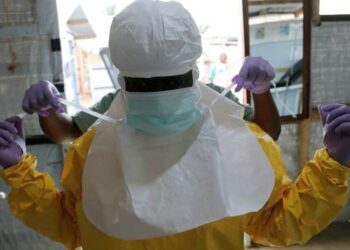High cholesterol is when you have too much cholesterol in your blood. High cholesterol often doesn’t show signs and remains a hidden danger that affects millions of lives.
Cholesterol includes good cholesterol called high-density lipoprotein (HDL), bad cholesterol called low-density lipoprotein (LDL), and triglycerides, which are fatty substances similar to bad cholesterol.
A blood test can identify if your cholesterol levels are too high. Consult your doctor as untreated high cholesterol can lead to health issues like heart disease, stroke, and diabetes.
Here are some lifestyle changes that can help to lower your cholesterol levels for a healthier body naturally.
Eat a healthy diet
It’s definitely easy to say and hard to follow, but then the hard work is worth it, and in the case of high cholesterol, it’s essential. There are plenty of natural foods which can help reduce your cholesterol levels. Along with these, cut down on all processed foods, especially those with too much salt and sugar.
Soluble fibre found in oatmeal, kidney beans, apples, and Brussels sprouts reduces cholesterol absorption in the blood.
Whey protein from dairy products can lower LDL and total cholesterol. Food rich in omega-3 fatty acids, such as salmon, walnuts, and flaxseed, is also great for healthy heart tissue and blood vessels.
Reduce alcohol consumption
Yes, it looks cool to drink alcohol, and probably all your friends drink it. Especially if you are going to a party, is it even possible without booze?
But you have got to rise above what looks good and what truly is good. You need to choose what really matters – your health or peer pressure.
With that said, it is ok to consume alcohol once in a while. However, moderate alcohol use can contribute to increasing bad cholesterol in your body.
Lose weight
This is essential if you are overweight or obese. Carrying extra weight, especially around the abdomen, increases your ratio of visceral fat, which can affect even your liver. If you are overweight, your cholesterol levels will be higher, which can negatively affect your arteries and blood vessels.
Extra weight can be lost by not going on a crash diet, but by committing to a healthy diet consisting of home-cooked meals from natural food items. Eat lots of fruits, vegetables, nuts, seeds, and whole grains and exercise regularly to lose weight healthily. Also, ensure you drink plenty of water.
Quit smoking
Smoking increases the pressure on your heart and your heart rate, compounding the adverse effects of the buildup of cholesterol in and on the artery walls. Researchers have found that quitting tobacco improves HDL cholesterol levels by improving blood circulation and lung function.
The good news is that a year after quitting smoking, heart disease risk is cut in half for most ex-smokers. You can start by cutting down on the number of cigarettes you smoke and seeking help from friends and family to support you. You can also seek a health professional for guidance.
Increase activity and exercise
It’s great that you have the luxury to sit for a long time whenever you want. Or maybe it’s your work that requires long periods of sitting. Whatever the reason may be, you have to find a way to cut down on your sitting time and increase your overall physical activity throughout the day.
Exercise is also critical to help reduce your cholesterol levels, and you can choose your favourite activities like walking, swimming, cycling, dancing, etc.
However, you mustn’t spend the majority of your day on the couch or in a chair. Keep standing and moving now and then to get the much-needed physical activity.
Physical activity raises HDL in your bloodstream, which helps clear LDL and reduces atherosclerosis (thebuildup of cholesterol in and on the artery walls).
What happens in a cholesterol test
Cholesterol levels can be tested by taking some blood from your arm with a needle. The lab then processes this to determine your cholesterol levels, and you should receive the results within a few days.
They might ask you to refrain from eating anything for 12 hours before the test. The restriction may not be necessary, so you can confirm this while booking your appointment.
Another test is the finger-prick test, which is done by pricking your finger, and a drop of blood is put on a strip of paper. This is then put into a machine that checks your cholesterol within a few minutes.
This check-up can also help spot early signs of heart disease and diabetes.












